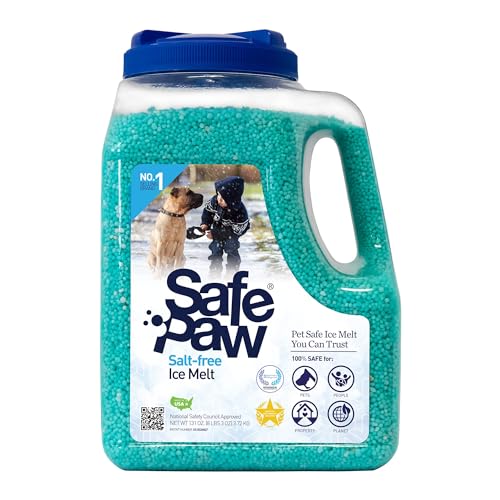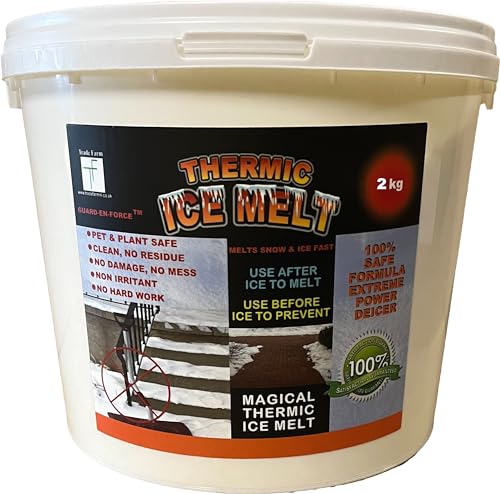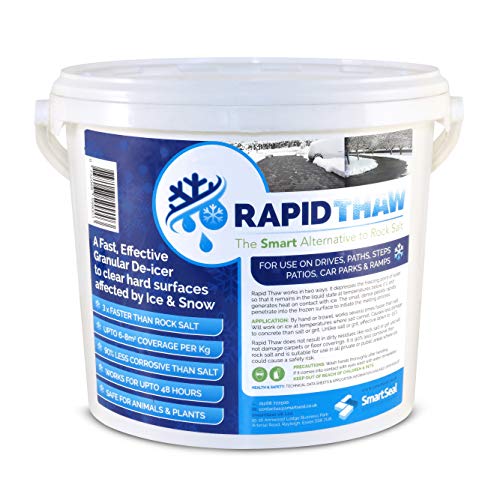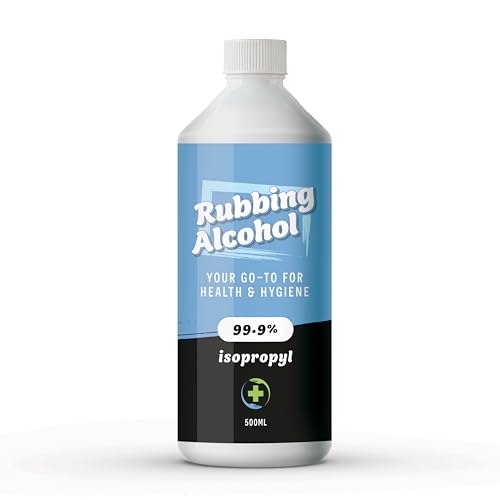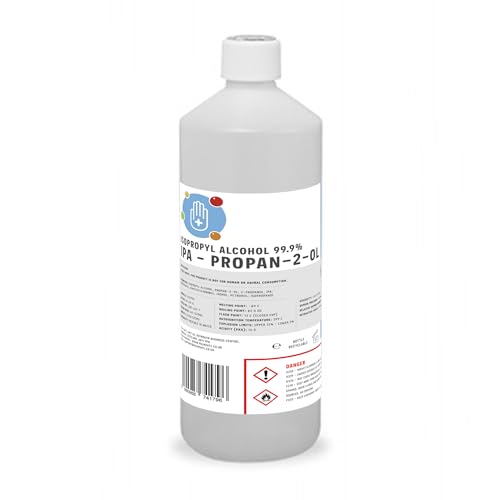How to remove ice from a driveway – and the one method experts say you should never do
What you should and shouldn't use to defrost your paving


Knowing how to remove ice from a driveway can be a total gamechanger, keeping your home safe and accessible no matter the temperature.
If you successfully prepared your driveway for winter, the area should be in a good condition to begin with, but whatever state it's in, when temperatures plummet ice can blindside you.
To help you preserve your driveway ideas, we’ve put together a guide on how to remove ice from a driveway, covering the most common methods and how effective – or risky – each of them are.
1. Rock salt
When you're thinking about how to remove ice from a driveway, rock salt is probably the first method that comes to mind. And while salt can makes swift work of de-icing a driveway or patio, there are a few caveats to bear in mind.
'When removing ice from a driveway, people typically use rock salt, but this can damage your driveway paving and leave white stains on the surface,’ warns Georgina Read, director at Paving Superstore. ‘To avoid this, test the salt on an inconspicuous area first.’
Staining your driveway isn’t the only risk that comes with using rock salt. If you've been reading about whether salt kills weeds, you'll know that it can damage plants, too. ‘It’s best to avoid using salt around grassy areas, and make sure pets do not ingest it, as rock salt can be harmful to plants and animals,’ cautions Simon Wardle, paving patio expert at Armstrong Cheshire.
If you're set on learning how to remove ice from a driveway with rock salt, it's fairly straightforward – you’ll just need to scatter the salt over the icy parts of the paving. ‘Spreading the salt over the ice and spraying it with warm water can speed up the de-icing process,’ advises Simon.
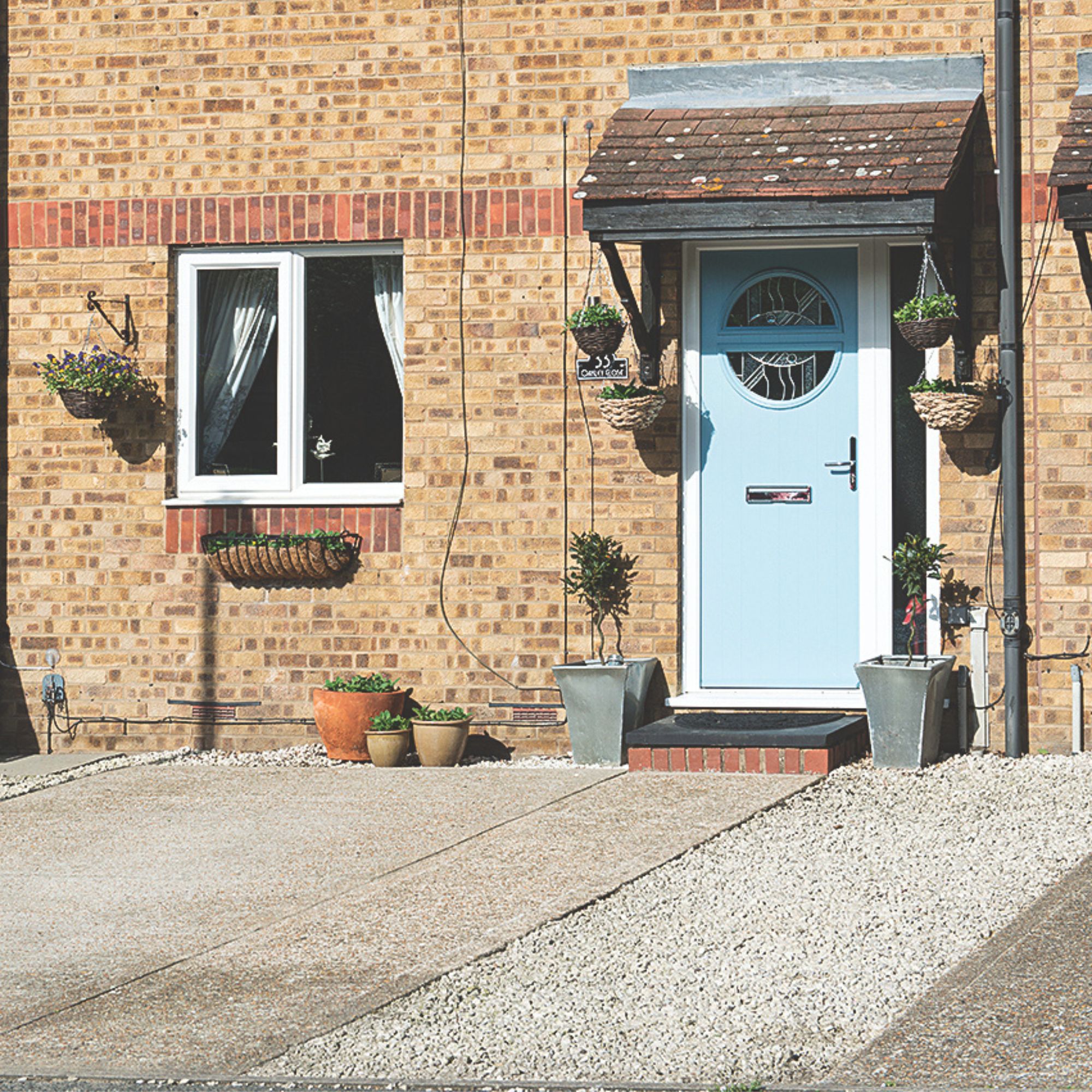
2. Sand
Sand is perhaps the most fail-safe method when it comes to learning how to remove ice from a driveway. In fact, we'd wager that it's the best option on this list.
‘Sand tends to be the safest option for a paved driveway,’ says Georgina. ‘However, it can leave a mess that needs to be cleared up once the ice has gone, so just bear this in mind as an additional step!’
'Natural de-icer like sand is very effective and can be used to melt any icy patches,' agrees Trevor Knight, technical garden and driveway specialist at Marshalls Plc.
Sand isn't just useful for de-icing a driveway – it can also be used to stop weeds growing in block paving, especially if you choose joint-filling paving sand.
3. Ice melt granules

Ice melt granules are another common way to remove ice from a driveway, but you’ll need to check the ingredients to avoid damaging your paving and wildlife.
‘When choosing your ice melt granules, avoid choosing ones that have high levels of sodium chloride (rock salt), and instead opt for ones that have CMA (calcium magnesium acetate),’ advises Georgina. ‘Not only is CMA non-corrosive, but it’s also less harmful to the environment.’
Driveway specialist Trevor also warns against harmful de-icing ingredients. 'Many de-icing chemicals contain ammonium nitrates and sulphates which can contribute to paving deterioration,' he says.
Luckily, there are several non-toxic formulas on the market that won't stain your driveway – or your carpets, if you walk it in.
4. Rubbing alcohol

Rubbing alcohol is another effective solution for how to remove ice from a driveway thanks to its low freezing point.
'This can melt ice within 15 to 30 minutes, depending on the amount used and the ambient temperature,' says Simon. 'The alcohol's low freezing point helps it to work quickly, even in cold conditions.'
Bundle two parts rubbing alcohol and one part warm water into a bottle and spray it over the ice. Some prefer to add fairy liquid to the mix, but bear in mind that the soap could make your driveway slippery even after the ice has melted.
5. Vinegar
Vinegar is good at killing weeds and cleaning metal garden furniture, and it's also effective at de-icing a patio, though it's better suited to smaller areas.
‘A mixture of 50% warm water and 50% vinegar provides an excellent eco-friendly alternative,' says Simon. 'While this method may take a bit longer to work compared to rock salt or rubbing alcohol, it is safe for the environment and an accessible option for many homeowners.'
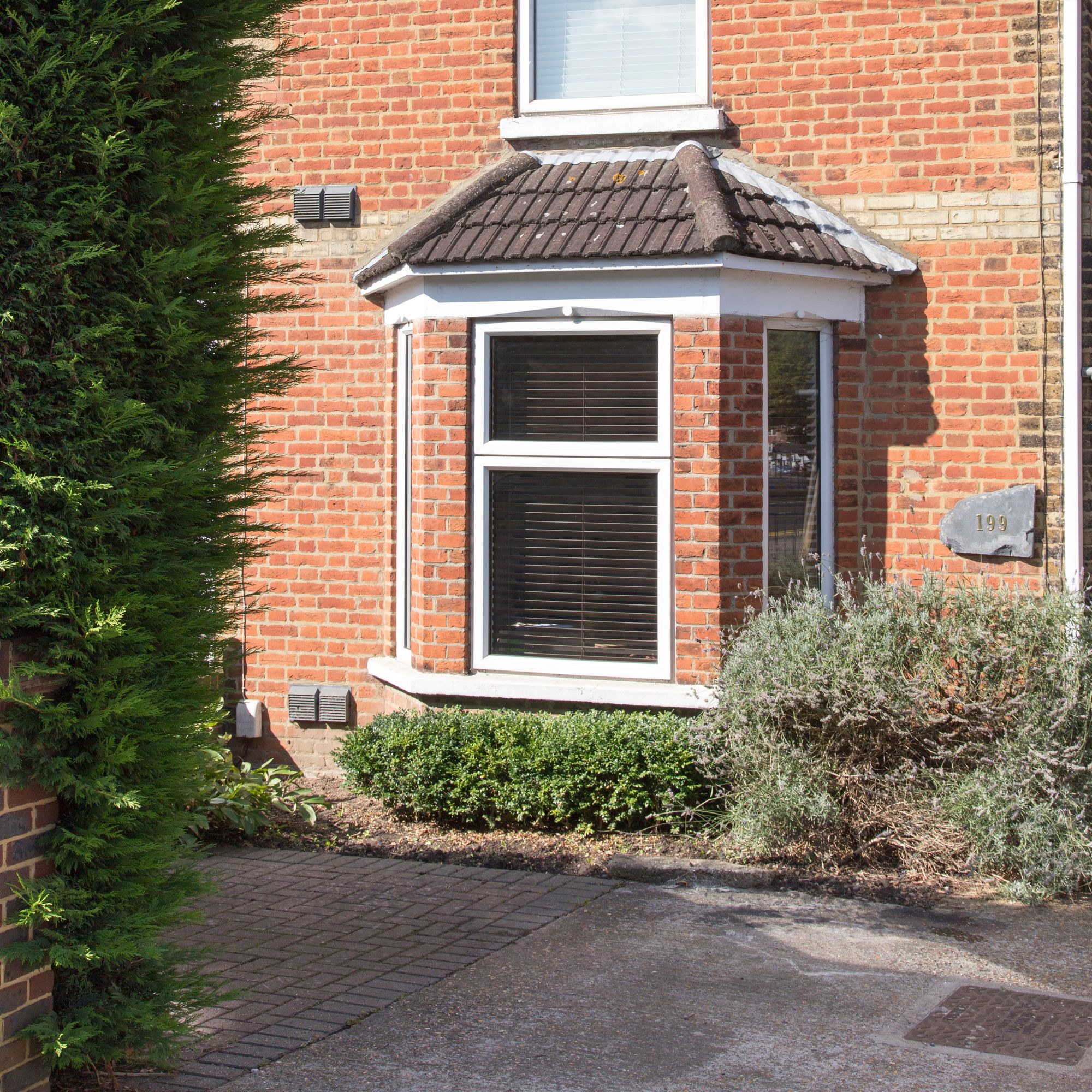
What not to use
Hot water should be avoided when de-icing a driveway. It might seem like an efficient solution because it melts the ice quickly, but it’s actually a really dangerous idea.
For one, it can create black ice. ‘Although hot water can quickly melt ice, it can also cool down and freeze again in other areas, creating an invisible, slippery type of ice, increasing the risk of injury,’ warns paving expert Simon.
There’s also the risk of injury from the water itself. ‘Boiling water can splash, posing a burn risk to anyone nearby,’ Simon says. ‘Safer alternatives, such as de-icers, are recommended to effectively manage thicker ice without these risks.
Simon also warns that hot water can damage the surface of a driveway, especially if it’s made of concrete or asphalt. ‘It’s especially important to avoid using hot water on ice thicker than half an inch, as the extreme temperature difference can cause the ice to crack or shatter, potentially damaging the surface,’ he explains.
FAQs
What is the fastest way to remove ice from a driveway?
Rock ice and rubbing alcohol are the fastest ways to remove ice from a driveway, but some ice melt granules will work quickly, too.
‘When applied to ice, rock salt begins to work almost immediately by lowering the freezing point of water,’ Simon explains. ‘It can take about 15 to 30 minutes to start seeing noticeable melting, especially when combined with warm water, but its effectiveness will begin to decrease as the temperature drops below -3.9°C.’
If you're figuring out how to remove ice from a driveway, there are plenty of options at your disposal. From the list above, we recommend avoiding the boiling water instead opting for sand – it's safe for the environment, won't damage your driveway, and it's an effective de-icer.
Get the Ideal Home Newsletter
Sign up to our newsletter for style and decor inspiration, house makeovers, project advice and more.

Sophie joined the Ideal Home team as Gardens Editor in June 2024. After studying English at Royal Holloway, University of London, she began writing for Grow Your Own, which spurred on her love of gardening. She's tried growing almost every vegetable under the sun, and has a soft spot for roses and dinnerplate dahlias.
As Gardens Editor, Sophie's always on the lookout for the latest garden trend. She loves sharing growing hacks for every space, from herbaceous borders to balconies.
-
 Should your front door colour match your hallway? Interior experts reveal 3 reasons why it should (and 3 reasons it shouldn't)
Should your front door colour match your hallway? Interior experts reveal 3 reasons why it should (and 3 reasons it shouldn't)Are you team matching or contrasting?
By Ellis Cochrane
-
 This £200 limited-time discount makes this Dyson vacuum cheaper than I’ve ever seen it - run don’t walk to Argos for this bargain
This £200 limited-time discount makes this Dyson vacuum cheaper than I’ve ever seen it - run don’t walk to Argos for this bargainIt's the most affordable Dyson on the market right now
By Lauren Bradbury
-
 Martin and Shirlie Kemp’s pastel flower beds has given their Victorian renovation a romantic look - how you can get the look
Martin and Shirlie Kemp’s pastel flower beds has given their Victorian renovation a romantic look - how you can get the lookTheir pastel garden is the cottage garden inspo you've been looking for
By Kezia Reynolds
